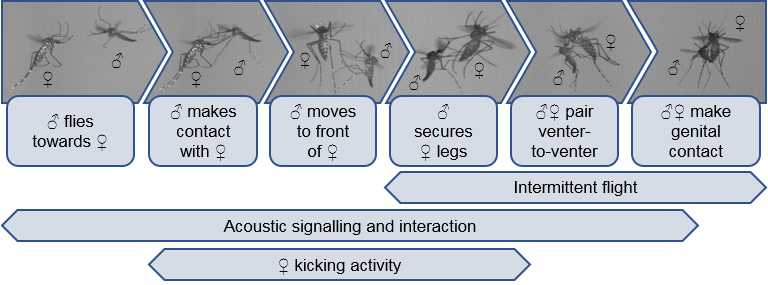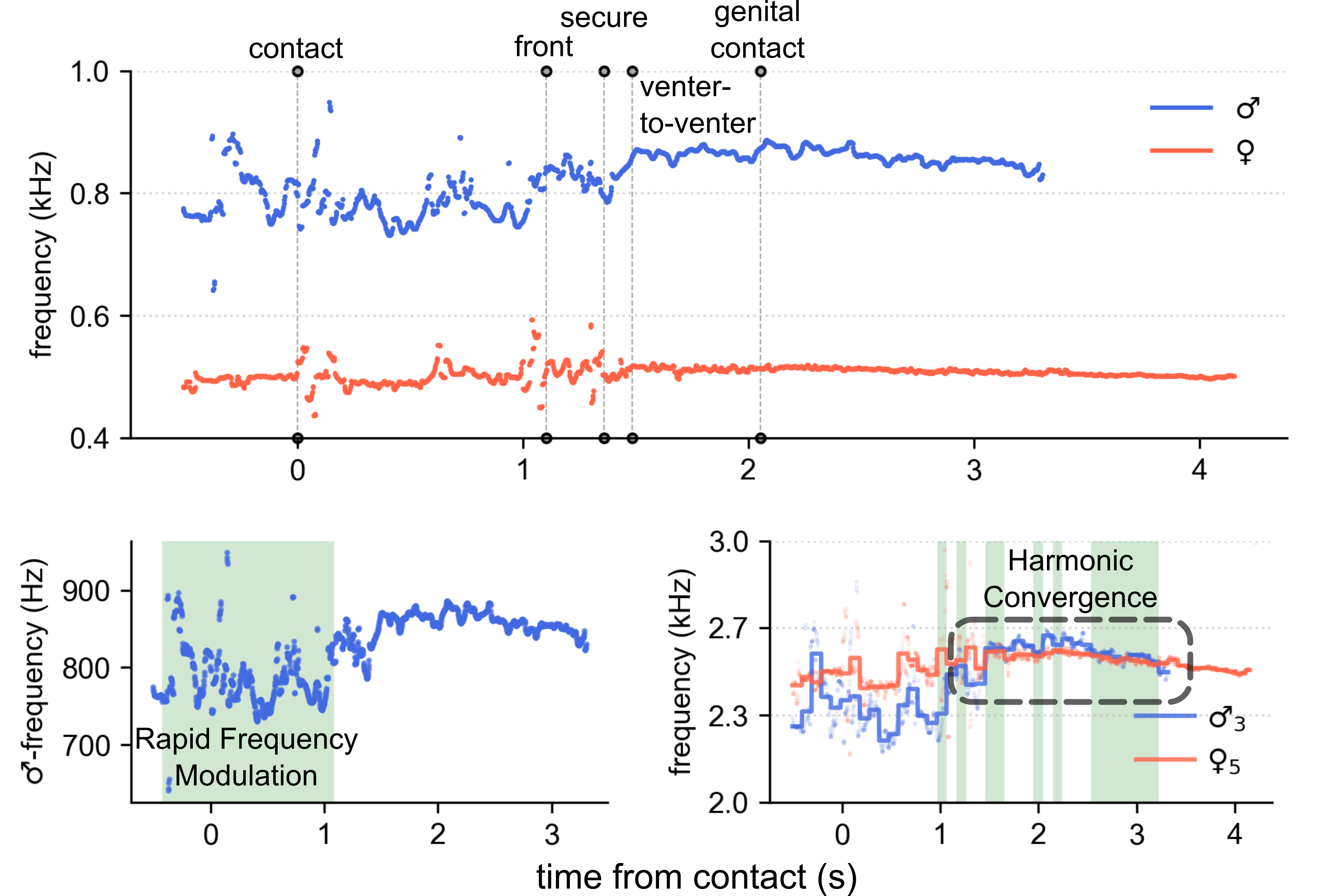
Mosquitoes are responsible for the transmission of a multitude of deadly pathogens that affect the lives and livelihoods of millions of people across the world each year. Due to the limited availability of specific vaccines and preventative medications for many of these diseases, vector control is often seen as the most effective way to reduce their spread. For the yellow fever mosquito, Aedes aegypti (the main vector of dengue, chikungunya, and Zika viruses), strategies based on the mass release of sterile and transgenic males to suppress local populations or make them refractory to viral infection are now at advanced stages of development and deployment. Fundamentally, these programs rely on modified males competing for, and mating with, wild females in the target population. Knowledge of mosquito mating ecology therefore has the potential to improve the effectiveness of such control methods.
Mosquito mating has traditionally been a difficult phenomenon to study. In Aedes aegypti, it usually takes place in small, male-dominated swarms, nearby a blood-meal host. Males detect incoming females via the sounds produced by their beating wings, and following a fast-paced, mid-air pursuit, attempt to seize and mate with them. The likelihood of success for any given mating attempt is known to be quite low; females deter males by evading them in flight, or by kicking them away once contact has been made. But the factors that govern this apparent choice remain somewhat elusive.
Recent evidence suggests that acoustic signalling plays an important role in the mosquito mating process. As mentioned above, males are strongly attracted towards the sound of a female’s wings. When close to one another, this attraction switches to an interaction, as each mosquito shifts their wingbeat in response to that of the other. In some pairs this results in an overlap of flight tones at frequencies above the dominant audible fundamental, recognisable as the all-too-familiar irritating buzz that many readers will have had the misfortune of experiencing! This frequency matching, commonly referred to as “harmonic convergence”, has been associated with increased mating success, yet it is unclear how it fits into the overall mating sequence.

In our recent paper, we captured individual mating interactions between pairs of Aedes aegypti using synchronised high-speed video and sound recordings. Our goal here was simple: to create a detailed map of the mating process, integrating behavioural and acoustic features, in order to compare successful and unsuccessful mating attempts. We used manual visual processing to score and time certain behaviours, such as kicks and bodily reorientations. We then used advanced signal extraction techniques to derive high-quality sound data from the male and female wingbeats, overlaying this information onto our timeline of behavioural events.
We found that mating in Aedes aegypti follows a highly repeatable pathway that takes place over a matter of seconds. After making contact with a female by lunging at her with his legs, a male would then immediately crawl to her front, before securing his grip and adopting the “venter-to-venter” position, the final pre-requisite to copulation.

Most mating attempts resulted in failure, which typically occurred in one of two ways. Firstly, early in the interaction, males were displaced by female kicks, which were delivered at high intensity during this period. Secondly—for those males that were able to hang on—females would often simply stop flying, leading to a breakdown of the attempt, but only before the venter-to-venter position had been adopted. Importantly, successful males were kicked at a reduced rate and were able to sustain paired flight for longer than those that were rejected.

Comments